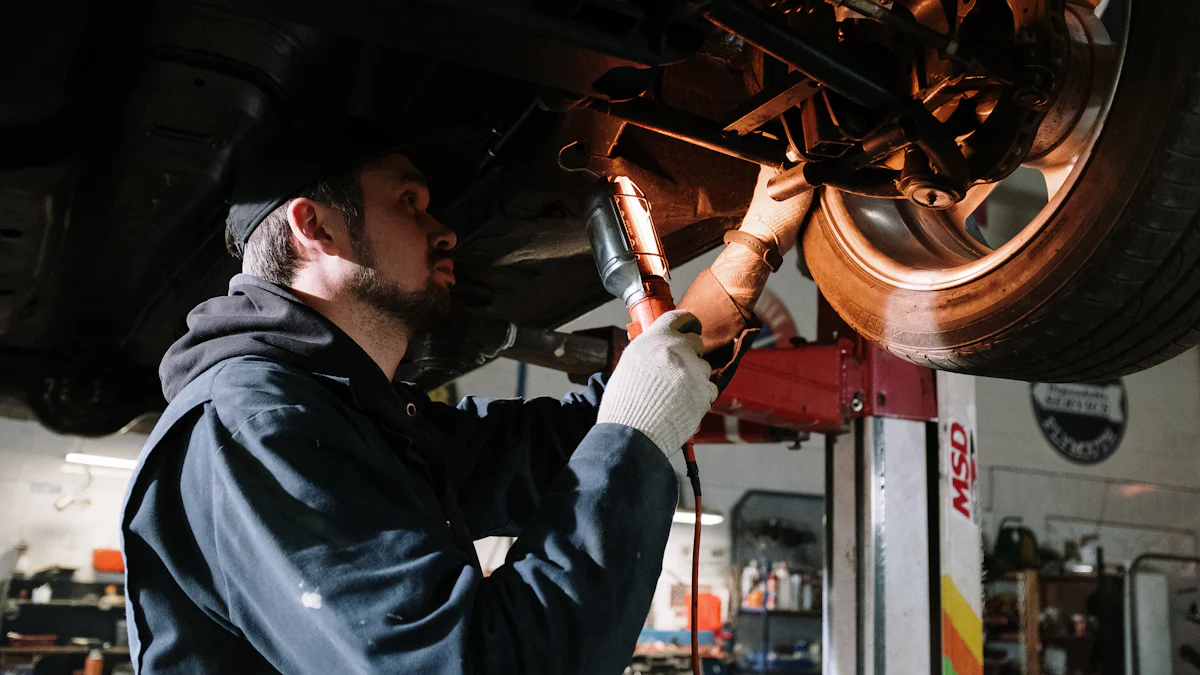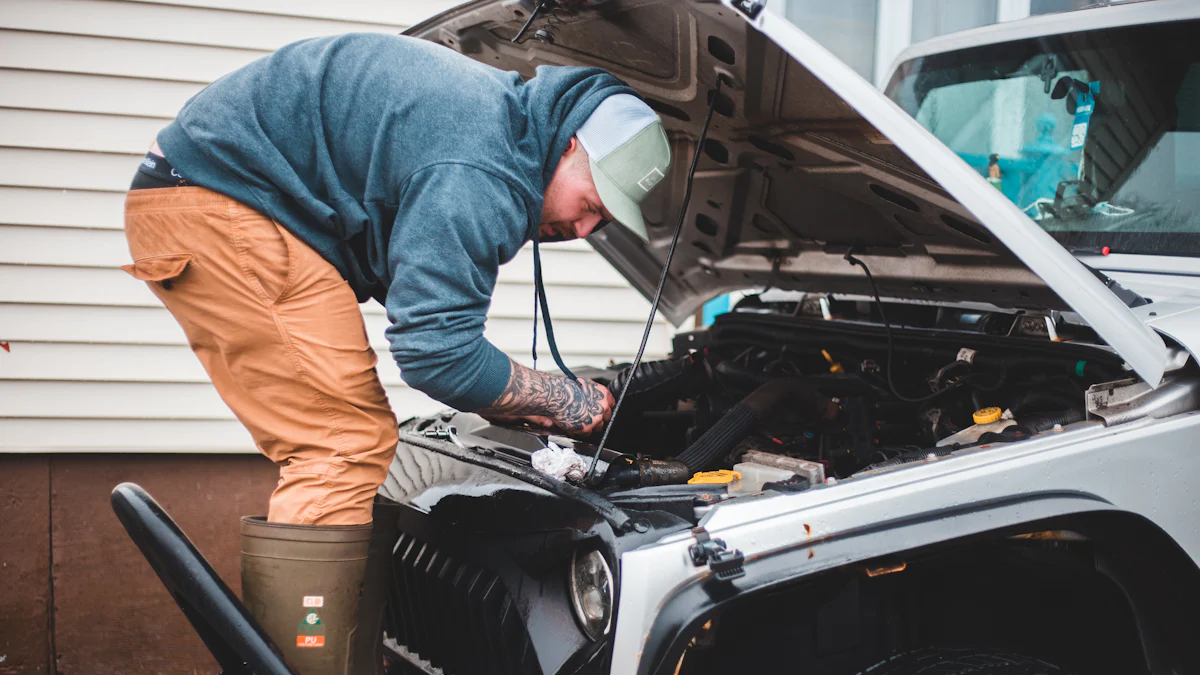
Addressing automotive harmonic balancer wobble is crucial for ensuring smooth engine operation and preventing potential damage. Understanding the steps to resolve this issue is essential for maintaining vehicle safety and performance. Werkwell‘s Harmonic Balancer offers a reliable solution with its high-quality design and precision engineering. By following expert guidance, individuals can learn how to fix harmonic balancer wobble effectively, enhancing their driving experience.
Research
Understanding Harmonic Balancer Wobble
When considering Causes of Harmonic Balancer Wobble, it is essential to recognize that excessive belt tension can lead to crankshaft snout runout, resulting in the wobbling of the harmonic balancer. This issue can also arise from a failing rubber insulator within the balancer, emphasizing the importance of regular inspection and maintenance.
Symptoms indicating Harmonic Balancer Wobble are crucial to identify promptly. If your vehicle experiences rough idling or stalls unexpectedly, it may be a sign of harmonic balancer wobble. Additionally, observing wobbling specifically at idle that smoothens out with throttle application could indicate an underlying problem with the balancer that needs attention.
Importance of Timely Replacement
The significance of addressing harmonic balancer wobble promptly cannot be overstated. Neglecting this issue can result in potential engine damage, impacting the overall performance and longevity of your vehicle. Safety concerns also arise as harmonic balancer wobble can lead to severe engine complications if left unresolved.
By understanding the causes and symptoms associated with harmonic balancer wobble, individuals can take proactive steps to ensure their vehicle’s optimal functioning and safety. Regular inspection and timely replacement are key factors in maintaining a well-operating engine system.
Identifying the Issue

Upon encountering potential Harmonic Balancer Wobble concerns, a thorough examination becomes imperative to pinpoint the root cause accurately. This section delves into the meticulous process of visually inspecting and utilizing diagnostic tools to identify and address any issues promptly.
Visual Inspection
Checking for Wobble
Initiate the inspection process by examining the harmonic balancer for any visible irregularities. Look closely for signs of wobbling, which may manifest as subtle movements or deviations from its normal position. A steady hand and keen eye are essential in detecting even minor discrepancies that could indicate underlying problems.
Inspecting the Rubber Insulator
Shift your focus towards assessing the condition of the rubber insulator within the harmonic balancer. The rubber component plays a pivotal role in maintaining stability and reducing vibrations. Any signs of wear, tear, or deterioration in this insulator could contribute to harmonic balancer wobble. Carefully scrutinize this crucial element to determine if it requires immediate attention or replacement.
Diagnostic Tools
Using a Stethoscope
Employing a stethoscope can provide valuable insights into the internal mechanisms of the harmonic balancer. By listening attentively to the sounds emitted during engine operation, anomalies such as unusual vibrations or rattling noises can be detected. The stethoscope serves as a reliable tool in identifying specific areas of concern within the harmonic balancer, aiding in precise diagnosis and targeted solutions.
Observing the Crankshaft Bolt
Direct your focus towards observing the crankshaft bolt while engaging the engine. A stable and secure crankshaft bolt indicates proper alignment and functionality, contributing to overall engine performance. Any visible movements or looseness in this critical component could signify issues related to harmonic balancer wobble. By closely monitoring the crankshaft bolt during operation, potential discrepancies can be identified early on, allowing for timely intervention.
How to Fix Harmonic Balancer Wobble
Preparation
Gathering Tools
- Socket wrench set: Ensure you have the appropriate socket wrench set to effectively remove and install the harmonic balancer.
- Harmonic balancer puller: This tool is essential for safely removing the old harmonic balancer without causing damage.
- Torque wrench: A torque wrench is necessary for accurately tightening the new harmonic balancer to manufacturer specifications.
- Rubber mallet: Use a rubber mallet to gently tap the harmonic balancer into place during installation.
- Safety goggles and gloves: Prioritize safety by wearing goggles and gloves to protect yourself during the repair process.
Safety Precautions
- Disconnect the battery: Before starting any work, disconnect the vehicle’s battery to prevent any electrical mishaps.
- Secure the vehicle: Ensure your car is parked on a flat, stable surface with the parking brake engaged for added safety.
- Allow engine cooling: Let the engine cool down before beginning work to avoid burns from hot components.
- Follow manufacturer guidelines: Adhere strictly to the manufacturer’s instructions for harmonic balancer removal and installation.
- Work in a well-lit area: Optimal lighting will help you see clearly and perform tasks more efficiently.
Step-by-Step DIY Guide
Removing the Old Harmonic Balancer
- Accessing the harmonic balancer: Locate the harmonic balancer at the front of your engine, typically attached to the crankshaft pulley.
- Loosening bolts: Use your socket wrench set to loosen and remove any bolts securing the old harmonic balancer in place.
- Applying harmonic balancer puller: Carefully attach the harmonic balancer puller according to its instructions, ensuring a secure fit.
- Removing with caution: Slowly turn the puller until it dislodges the old harmonic balancer without causing damage to surrounding components.
Installing The New Harmonic Balancer
- Preparing for installation: Clean any debris or residue from the crankshaft snout before placing your new harmonic balancer.
- Aligning correctly: Align keyways on both parts before gently sliding on your new harmonic balancer, ensuring proper positioning.
- Securing with bolts: Tighten bolts following a crisscross pattern gradually until they are securely fastened using a torque wrench.
- Final checks : Confirm that all connections are secure, then reconnect your vehicle’s battery and start your engine for testing.
Specific Car Models
Chevrolet Corvette
- The Chevrolet Corvette presents unique challenges due to its high-performance nature; however, following our guide can help resolve wobbling issues efficiently.
Other Popular Models
- Various other popular car models may experience harmonic balancer wobble; understanding how to address this issue ensures smooth engine operation across different vehicles.
Conclusion
In summary, addressing harmonic balancer wobble is paramount for maintaining a vehicle’s optimal performance and safety. Failure to resolve this issue promptly can lead to severe engine complications and safety hazards. By understanding the causes and symptoms associated with harmonic balancer wobble, individuals can take proactive steps to ensure their vehicle operates smoothly.
It is crucial to emphasize the importance of regular inspection and timely replacement of the harmonic balancer to prevent wobbling issues. Using high-quality parts like Werkwell’s Harmonic Balancer can significantly reduce the risk of engine damage and ensure a stable driving experience.
In conclusion, individuals are encouraged to prioritize maintenance and inspection routines for their vehicles, focusing on components like the harmonic balancer. By staying vigilant and addressing any signs of wobbling promptly, drivers can safeguard their engines from potential harm and enjoy a reliable driving experience. Remember, prevention is key in ensuring your vehicle’s longevity and performance on the road.
In conclusion, addressing harmonic balancer wobble promptly is vital to maintain a vehicle’s performance and safety. Using high-quality parts like Werkwell‘s Harmonic Balancer ensures smooth engine operation and reduces the risk of damage. Regular inspection and maintenance are key practices to prevent wobbling issues and prolong your vehicle’s lifespan. Remember, proactive care leads to a reliable driving experience.
Post time: May-30-2024



